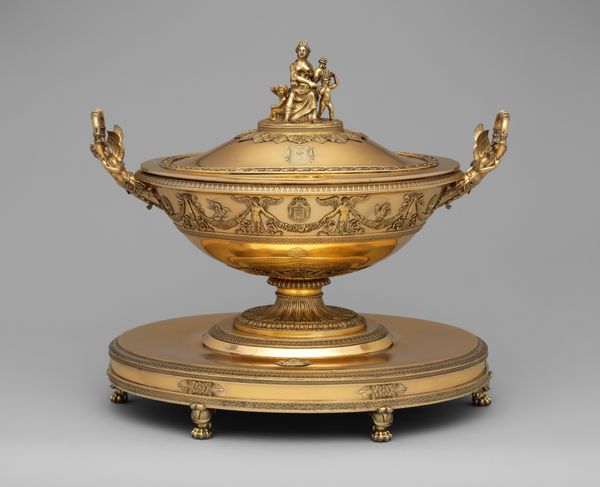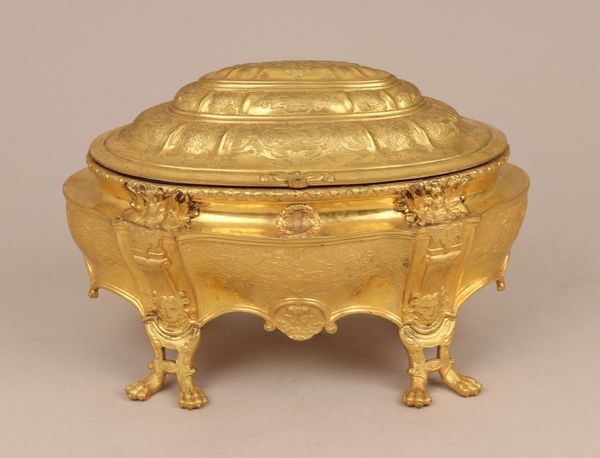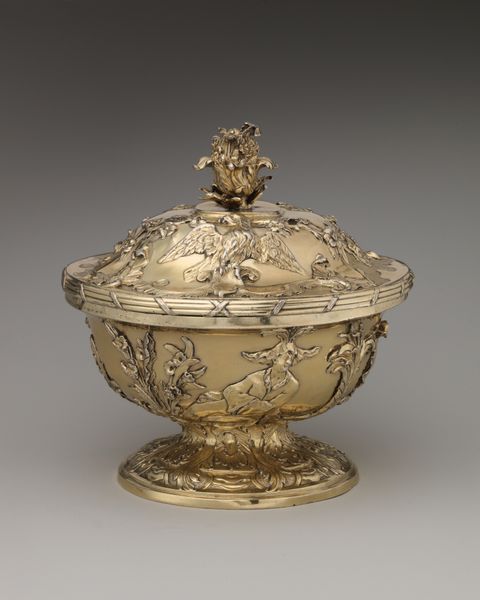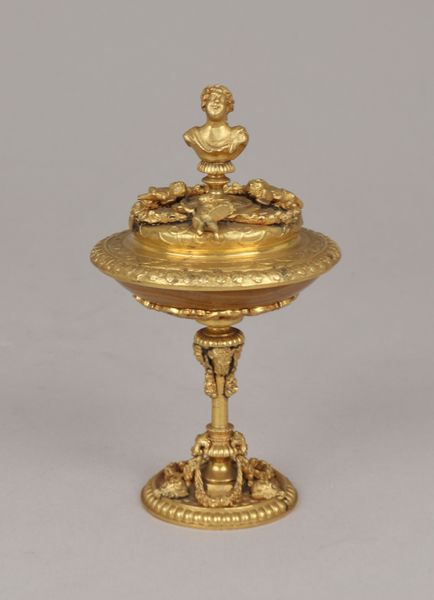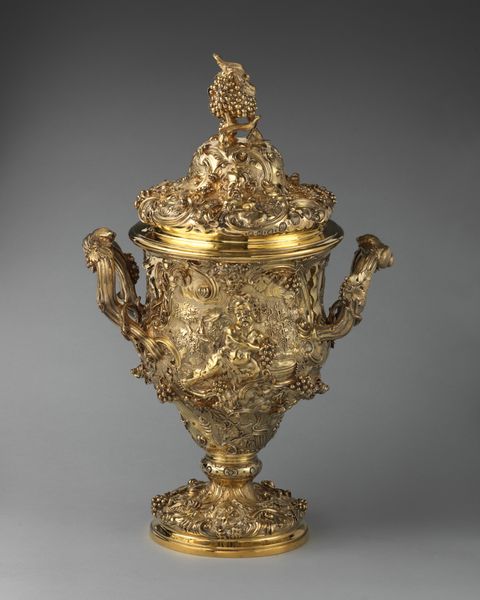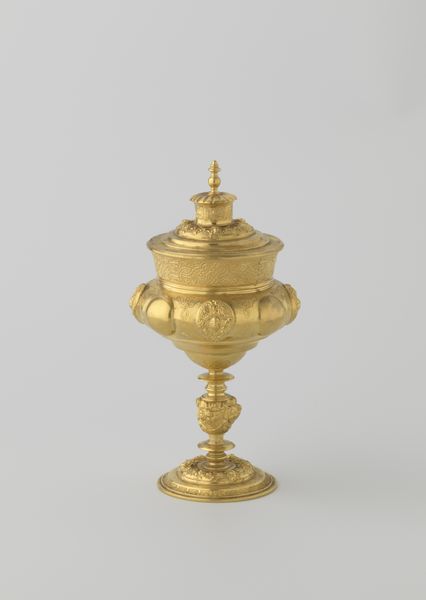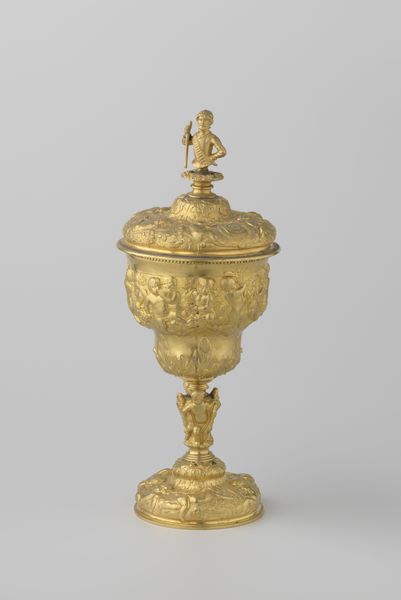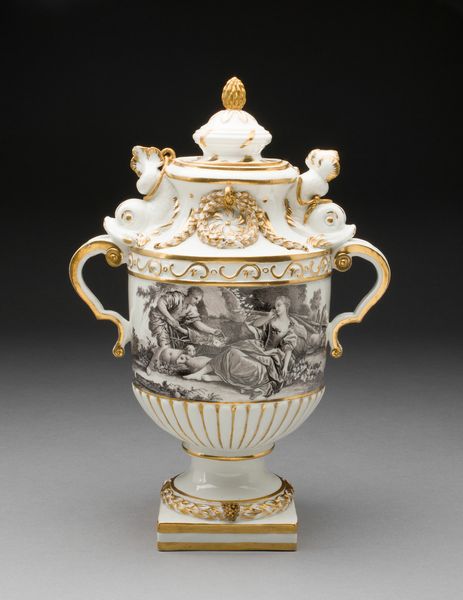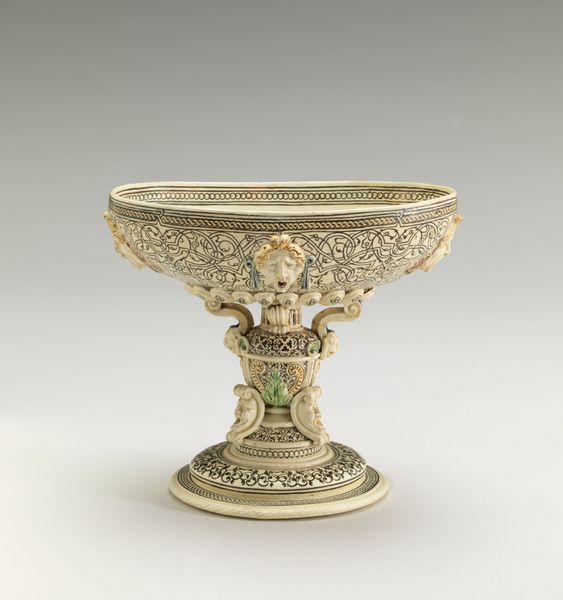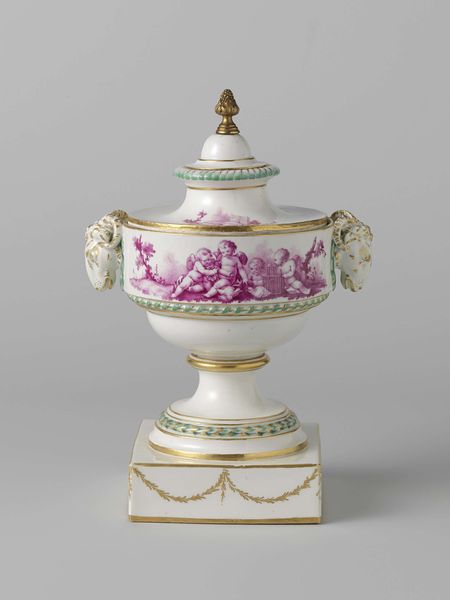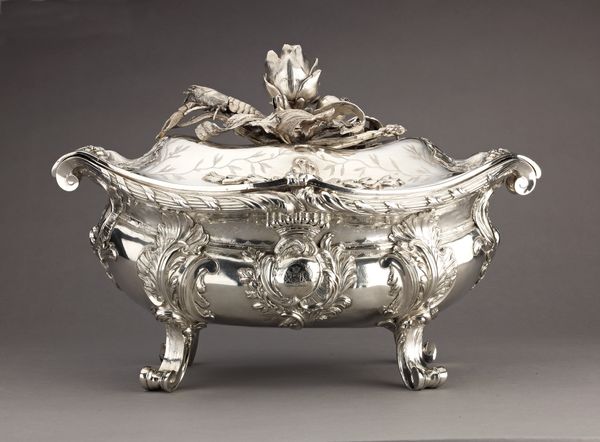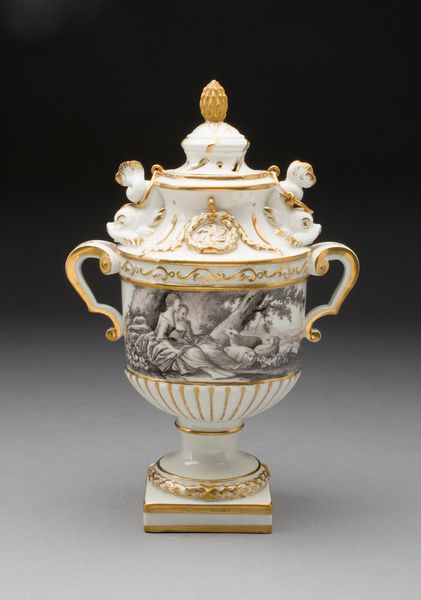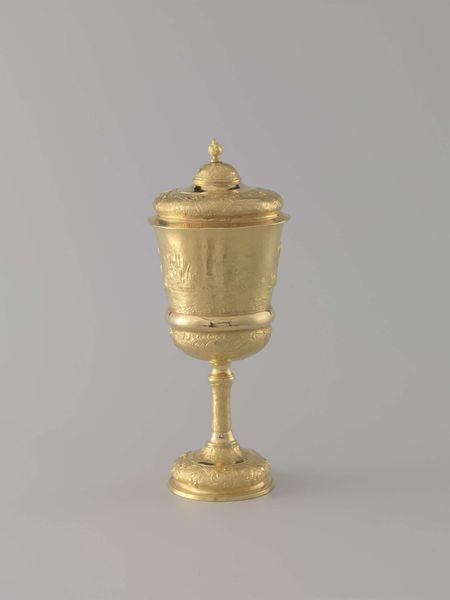
Cloches (dish covers), coolers, soup tureens, sauceboats, salt cellars, pepper and mustard pots c. 1819
0:00
0:00
Dimensions: height 49.7 cm, width 49.4 cm, depth 27.9 cm, weight 14590 gr
Copyright: Rijks Museum: Open Domain
This silver gilt service piece was crafted by Jean-Baptiste-Claude Odiot, showcasing motifs that resonate deeply with classical antiquity. Note the winged female figures, reminiscent of the Caryatids, who supported architectural structures in ancient Greece. The swan-shaped handles are symbols of elegance and transformation, linking to Aphrodite and the myth of Leda. These motifs echo through history, recurring in Renaissance paintings and Baroque sculptures. Consider, for instance, how angels evolved from winged victories in Roman art, transforming from symbols of military triumph to spiritual messengers in Christian iconography. The weight of the bowl held aloft by these figures evokes an unconscious sense of burden and resilience. Odiot harnesses this powerful imagery, engaging our collective memory and tapping into primal emotions of support, endurance, and transformation. This is not merely a vessel for food; it's a repository of cultural memory, constantly reshaped by history.
Comments
rijksmuseum about 2 years ago
⋮
A confidante of the Russian empress commissioned this 140-piece service, several items of which are displayed here. Silversmith Odiot, the painter Prud’hon and the architect Cavelier proudly presented the new models at the 1819 French national exhibition of decorative art. Notable are the kneeling angels supporting the soup tureen, which are characteristic of the late Empire style.
Join the conversation
Join millions of artists and users on Artera today and experience the ultimate creative platform.
